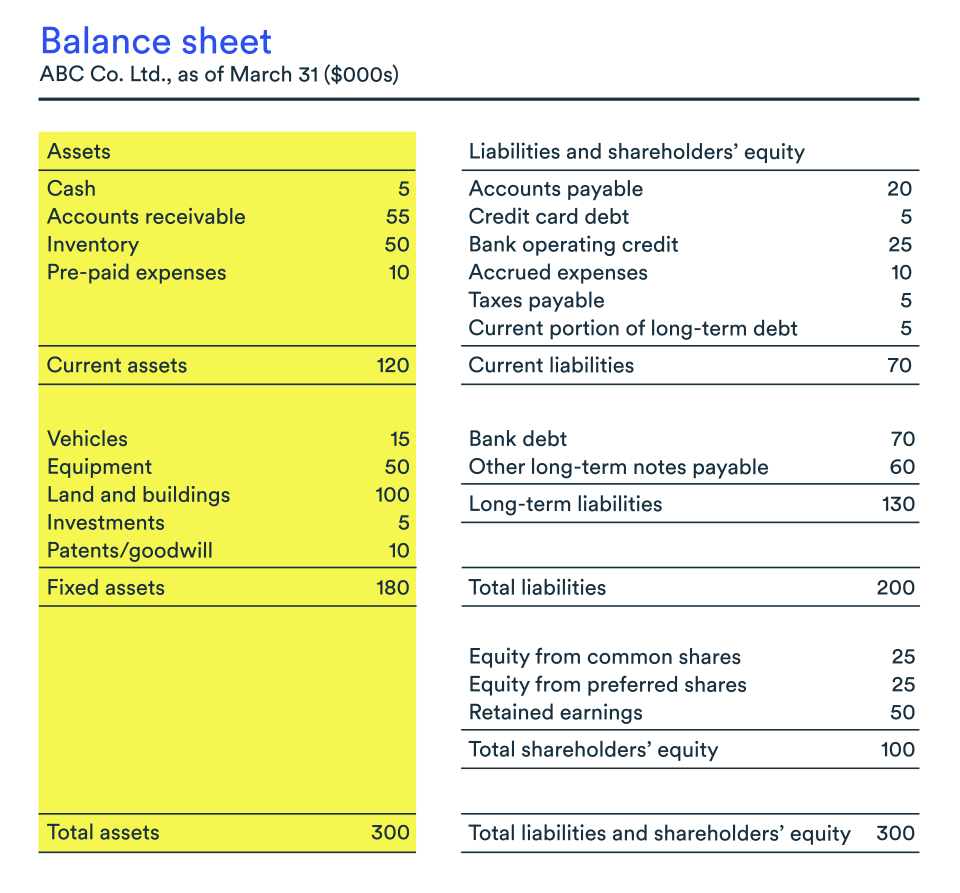Assets
Asset definition
Assets refer to everything a company owns, from cash to equipment to intellectual proprety. On a balance sheet, they are devided into current and long-term assets.
Assets are the economic resources a business uses to increase sales, reduce costs or otherwise generate value. One example would be computer equipment and software for office workers, which is an asset that speeds up daily tasks and increases productivity.
There are two broad categories of assets that appear on a company’s balance sheet:
- Current assets (also called short-term assets)
- Long-term assets (also called non-current assets, fixed assets or capital assets)
Current assets are those that the company will realize in the normal course of business or within 12 months after the end of the fiscal year. Non-current assets are resources that the company will use over more than one period.
Current assets
Current assets are used to generate value within the fiscal year. They include any assets that your company:
- expects to realize, sell or consume in its normal operating cycle
- expects to realize within 12 months of the reporting date
- holds for trading
They also include available cash.
All other assets are recorded as long-term assets.
Current assets generally include the following:
- Available cash
- Investments
- Accounts receivable and other receivables
- Inventory
- Prepaid expenses
Investments recorded under current assets are those that can be realized quickly, such as marketable securities, treasury bills, certificates of deposit and demand loans.
How do you record current assets on a balance sheet?
Assets in the balance sheet are listed from most to least liquid. Cash is recorded at the top of the balance sheet because it is the most liquid asset. It is followed by accounts receivable, which settle current liabilities in the normal course of business.
Current assets are recorded separately from long-term assets because they are used to calculate a company’s working capital.
Long-term assets
Long-term assets are those a business can expect to use, replace and/or convert to cash beyond the normal operating cycle of at least 12 months.
Long-term assets are often used for years. This distinguishes them from current assets, which companies typically spend within 12 months.
Because long-term assets are harder to convert to cash than current assets, they are often referred to as illiquid assets.
Companies periodically refurbish or replace long-term assets by taking on debt and/or raising equity capital. Matching long-term debt to the expected lifetime of an asset is a common business practice.
How do you record long-term assets on a balance sheet?
Long-term assets appear on the balance sheet after current assets. Because they are purchased for long-term use, their value decreases over time because of wear and tear. This is recorded as a depreciation on the income statement and negatively affects net income.
A similar expense would be recorded as a depletion expense for natural resources.
Example of assets on the balance sheet
The sample balance sheet below shows that ABC Co. had $300,000 in assets as of March 31, 2023 ($120,000 in current assets and $180,000 in long-term assets).
Next step
Discover how to track and interpret pertinent financial information for your business by downloading Understand Your Financial Statements.
